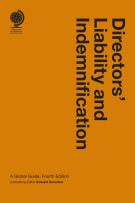
What, in a nutshell, are commodity derivatives?
Commodity derivatives are the oldest form of derivative instrument. On their simplest level, they can help a grain producer to get a better, or at least more predictable, price for its produce, such as a fixed price per tonne, by entering into a physically settled forward commodity transaction. The end counterparty might be a grocery chain looking to secure wheat at that specified price on a future date. Both parties give up the potential benefit of a price rise (for the farmer) or fall (for the grocery chain) to guard against an adverse profit-wiping price movement. Such contracts were being entered into thousands of years ago in ancient Egypt and Mesopotamia and, through modern-day futures exchanges and derivatives brokers, remain very popular still today.
Derivatives, generally, are financial instruments which derivative their value from the underlying asset. In the case of commodity derivatives, their value is derived from an agricultural produce (eg, corn, frozen concentrated orange juice or pork bellies), metals, oil, electricity or gas, but also from more esoteric commodities such as freight, weather or EU carbon emission allowances, and others. Using a commodity derivative, you can be exposed to the price of a commodity (or invest in it) without actually owning it.
Are commodity derivatives special? In what way do they differ from other types of derivatives?
Commodity derivatives are, in principle, no different from any other types of derivative instrument, such as credit, equity or interest rate derivatives. As with these, they can be divided into over-the-counter (OTC) transactions (options, swaps and forwards), structured products and exchange-traded instruments.
But commodity derivatives are special! They are by far the oldest type of derivatives, as their modern origins date back to the 17th century, when they were established in Amsterdam and centred on the trade of tulips. The first organised exchange with standardised contracts on various commodities was the Chicago Board of Trade, set up in 1848. They were also the first derivatives to be subject to intense regulatory scrutiny. In India, trading in derivatives referencing cotton, oilseeds and bullion was restricted or suspended throughout the 1960s and 1970s, whereas in 1953 the US Congress banned trading in onion futures.
The long and turbulent history of commodity derivatives is reflected in their modern-day documentation. Whereas the major financial institutions use the standard International Swaps and Derivatives Association (ISDA) documentation for most types of derivatives (eg, credit, equity or interest rate derivatives), the standard agreements for commodity transactions have been drafted by various other associations (eg, the Baltic Exchange, the London Bullion Market Association or the Futures and Options Association), which pre-date ISDA by decades. Even the standard 2005 ISDA Commodity Definitions, which aim to provide standardised documentation in this field, reference and incorporate various other agreements prepared by the older industry bodies. This makes the derivative documentation for commodities more complex than for other asset classes.
What is the market for commodity derivatives?
The commodity markets are huge. At least for the last few hundred years, they have been ensuring the efficiency and smooth price management of the markets for agricultural produce, oil, major metals and other asset classes. The major participants in the commodity derivatives markets include corporates, which are both commodity producers and commodity users. In both cases, falling or rising commodity prices may have a huge impact on their profitability. Other main users include fund managers, hedge funds and financial institutions.
The Bank of International Settlements has calculated the total outstanding amount under OTC contracts as $2.944 trillion - a substantial drop from the peak of over $13 trillion in June 2008, but still double the size of the market in 2004, when it stood at $1.27 trillion.
How will recent regulatory changes on both sides of the Atlantic affect the commodity derivatives market?
Derivatives are believed to be one of the main culprits of the recent crisis and the regulators in the European Union and the United States tried to make the derivatives market more transparent and less opaque. The major change common to both the United States and the European Union will be the obligatory clearing of the majority of OTC trades through a limited number of highly regulated central counterparties. If a trade cannot be cleared, the parties will need to post a higher amount of margin than is currently the case.
Considering that commodity derivatives constitute a large chunk of the market, they will also be affected by this. The main issue is that the costs of entering into commodity derivative contracts will be much higher. Some users, especially those using complex OTC commodity derivatives to hedge their financial models (eg, airlines), are concerned that obligatory clearing will not allow them to hedge effectively.
Are commodity derivatives a good investment?
Movements in the prices of commodities have been traditionally negatively correlated to the price fluctuations of other financial instruments (eg, equities or bonds). Research proves that equities and bonds tend to follow the same trends, whereas commodities will rarely rise and fall in parallel. As a result, commodities are now seen as an essential part of a diversified portfolio.






